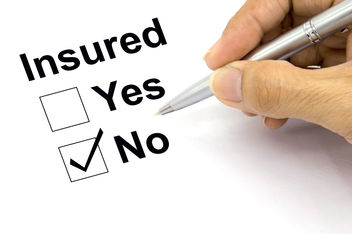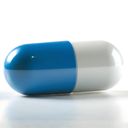How to Use Prescription Assistance Programs if You Don't Have Medical Insurance
April 6, 2023With the rising costs of prescription medication, it is hard for anyone to afford it. But if you don't have insurance or are paying out-of-pocket for your medications, it is nearly impossible.

The Inside Rx Blog
Get the Inside Scoop on tips & tricks that may help your family save on prescriptions!
Subscribe to stay up to date with the latest news and tips
Prescription drug costs, already high, continue to rise. According to the Office of the Assistant Secretary for Planning and Evaluation, the average price increase of 1,216 prescription medications from July 2021 to July 2022 was 31.6 percent.
As a result of the high cost of prescription medications, many cannot afford to purchase them. A West Health and Gallup survey found that approximately 18 million Americans could not pay for at least one prescription medication in the previous three months.
The high cost of prescription medication impacts everyone who needs it. However, it’s a substantial financial burden on those who do not have medical insurance and need to pay out-of-pocket for their medication.
To help those who can't afford their prescription medication, many pharmaceutical companies are offering patient or prescription assistance programs (PAPs). Learn more about them and how to use prescription assistance programs if you don't have medical insurance in this article.
Where Do Prescription Assistance Programs Come From?
Prescription assistance programs or PAPs help individuals and families who don't have health insurance or are underinsured obtain the prescription medications they need for their health conditions. PAPs are typically sponsored or offered by pharmaceutical companies, pharmacies, nonprofit organizations as well as federal and state programs.
The qualifications, restrictions and benefits of a PAP depend on the provider. The provider may consider factors such as your income and medical expenses to determine your eligibility.
Additionally, while most PAPs are free, some—like Kroger Rx Savings Club and Walgreens Prescription Savings Club—require users to pay a yearly membership fee. Others cannot be used by individuals with Medicare or Medicaid coverage.
Prescription Assistance Programs From Nonprofit Organizations
Some nonprofits offer assistance with drug plan premiums, prescription copays and out-of-pocket medication costs. The following are some examples:
- Rx Outreach
- Patient Advocate Foundation
- Healthwell Foundation
- Accessia Health
- The PAN Foundation
- Patient Advocate Foundation
- National Organization for Rare Disorders (NORD)
- The Leukemia & Lymphoma Society® (LLS)
- Good Days
- CancerCare Co-Payment Assistance Foundation
Federal and State Programs
The federal and state governments also offer programs to help people get the prescription medication they need. Some examples are:
- The Emergency Prescription Assistance Program (ASPR)
- Extra Help (Medicare and Social Security)
- Delaware Prescription Assistance Program
- HoosierRx
- Michigan Drug Assistance Program
- Prescription Advantage (Massachusetts)
- SeniorCare (Wisconsin)
You can find out if your state offers a pharmaceutical assistance program via the Medicare website. Just select your state in the dropdown, and click "View Programs."
Pharmaceutical Company Programs
Many pharmaceutical manufacturers manage or sponsor PAPs. Typically, drug company-sponsored programs only allow users to get discounts on the medicines they manufacture. The following are some examples of pharmaceutical company PAPs.
- AZ&Me Prescription Savings Program (AstraZeneca)
- Teva Cares Foundation (Teva)
- QVAR® RediHaler Savings Card (Teva)
- Financial Assistance for XOLAIR® (Genentech and Novartis)
- DUPIXENT® (Sanofi)
- GSK Patient Assistance Program for Prescription Medicines (GlaxoSmithKline)
- Pfizer Patient Assistance Program
- Merck Helps™ (Merck)
- EPIPEN® Access and Savings Programs (Viatris)

Vyvanse Coupon Guide 2025: How to Cut Your Prescription Costs

Lost Your Job? Here's How to Get Prescriptions Without Insurance Today

How to Explain Your Additional Employee Benefits (Like Inside Rx)

Emergency Medication Kit Basics: Prepare Before Disaster Strikes
Here's How to Use Prescription Assistance Programs If You Don't Have Medical Insurance
The process of being approved for and getting a patient assistance program varies depending on the provider. Generally, however, you will need to meet the provider's requirements, which may include one or more of the following:
- Limited or no prescription drug coverage from private or public health insurance
- Financial need
- Proof of U.S. residence or citizenship
Some providers may have additional requirements. For instance, patients who wish to apply for Pfizer's PAP must have a valid prescription for the Pfizer medicine for which they are seeking financial assistance.
Additionally, some PAP providers have your medication sent directly to you. Others provide you with a discount card or coupon to help you save on prescription medication costs.
To learn how to use prescription assistance programs if you don't have medical insurance, it's best to visit the provider's website. Eligibility requirements are usually indicated there, as are the forms you need to complete and submit.
Other Ways to Save: Using Prescription Discount Cards and Coupons
Another effective way to reduce your prescription medication costs is to use prescription discount cards. Also called prescription savings cards, they are meant to help people who are uninsured and underinsured pay for their prescription medications.
Prescription discount cards are typically free to use and can save you a significant amount on your medication. What's more, most of them do not have eligibility requirements.
However, keep in mind that prescription discount cards cannot be used in combination with prescription coverage. This means that any amount spent on your medication cannot be applied toward your out-of-pocket maximums or insurance deductibles.
Some prescription discount cards can be downloaded directly from the providers' websites, while others come as a mobile app. Still others can be printed out and presented to a participating pharmacy to get a discount.
Spironolactone
$ 5.84Lovastatin
$ 9.25Inside Rx: A Free and Easy-to-Use Prescription Discount Card
Inside Rx is a prescription discount card that allows users to save up to 80 percent on brand and generic medications. Unlike prescription assistance programs, the Inside Rx discount card does not have strict eligibility requirements. It also does not expire, and it can be used by everyone in the whole family.
To get an Inside Rx discount card, simply download one from the Inside Rx website. There are no forms to complete or submit. Alternatively, you may download the free Inside Rx app. The Inside Rx card can be used at nearly 60,000 pharmacies locations across the country.
Learn more about Inside Rx and how it can help you reduce your out-of-pocket medication costs by checking out our help page.
Sources: